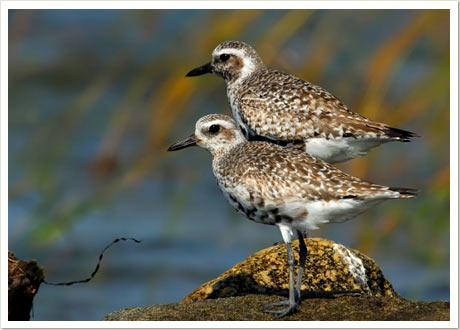|
| Black-bellied Plover |
PHOTO: 1 2 3 4 |
 |
|
 |
 |
| Black-bellied Plovers are most common on Plymouth Beach during migration in May and from July to October. A few birds also linger on the beach through the winter. Like other shorebirds, Black-bellied Plovers use the beach as a feeding and roosting area during migration, relying on stored fat reserves to survive subsequent migratory flights. At low tide, they are common on sand flats, where they hunt invertebrates by sight. At high tide, they can be found resting in the dunes as well as on sandy beach of the bay side. |
|
|